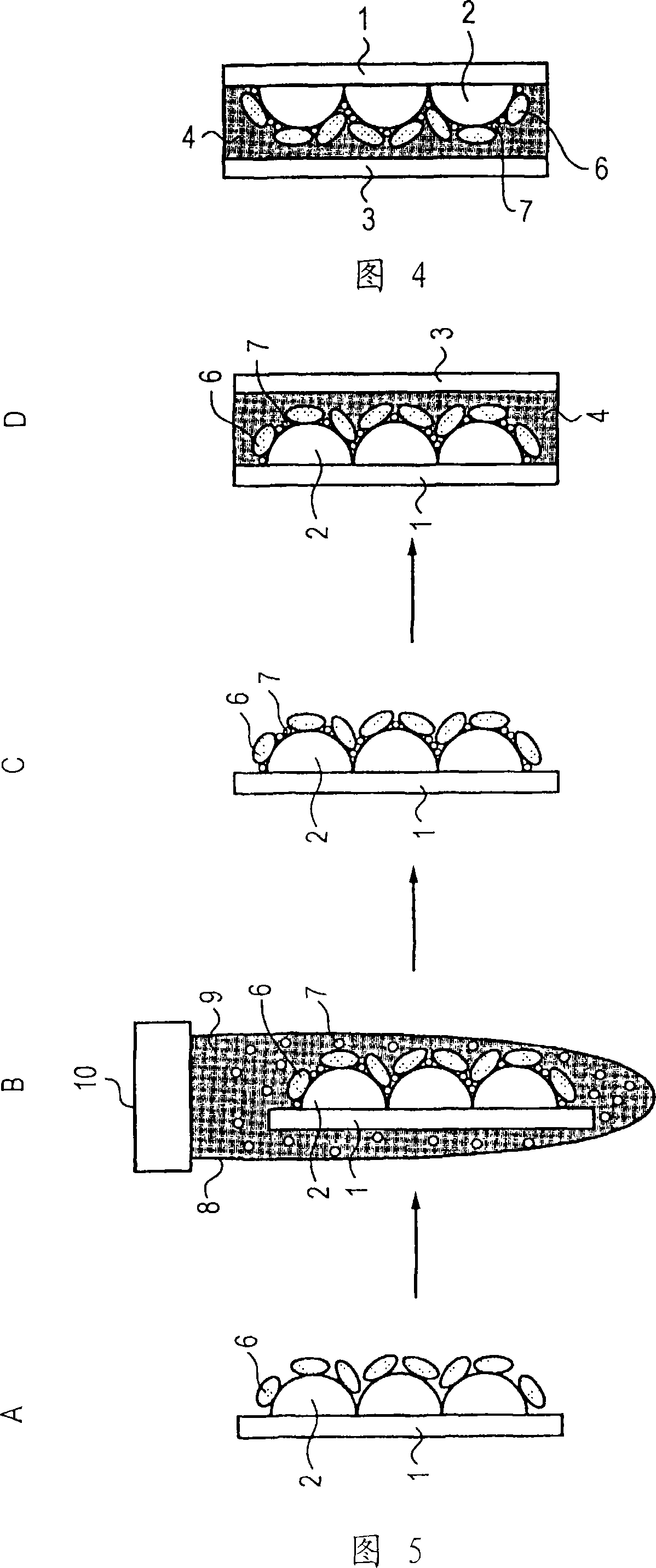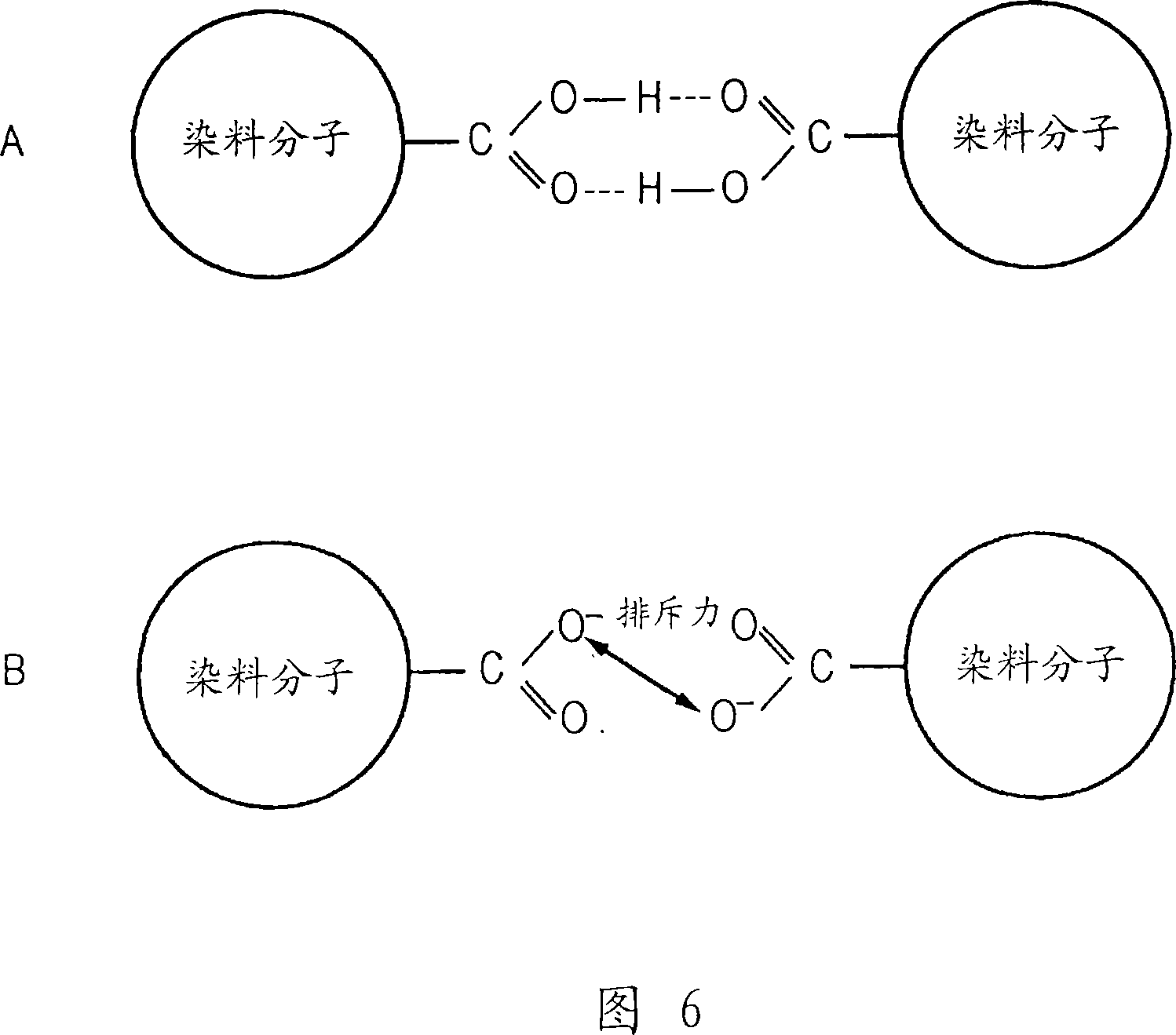Dye-sensitized photoelectric conversion element, its manufacturing method, electronic device, its manufacturing method and electronic apparatus
A dye-sensitized and photoelectric conversion element technology, which is applied in the field of electronic equipment and dye-sensitized solar cells, can solve the problems of unsatisfactory durability of solar cells and low photoelectric conversion efficiency of solar cells
- Summary
- Abstract
- Description
- Claims
- Application Information
AI Technical Summary
Problems solved by technology
Method used
Image
Examples
preparation example Construction
[0063] A method of producing the dye-sensitized photoelectric conversion element will now be described.
[0064] First, a transparent conductive substrate 1 is prepared. Next, a paste containing dispersed semiconductor fine particles is applied onto the transparent conductive substrate 1 with a predetermined gap (thickness). The resulting transparent conductive substrate 1 is heated to a predetermined temperature to sinter the semiconductor fine particles. The transparent conductive substrate 1 having the sintered semiconductor fine particles is immersed in a dye solution or the like, so that the semiconductor fine particles carry the dye. In the pigment solution, part of the acid functional groups of the sensitizing pigment molecules are pre-neutralized with a basic compound to form an anion, and the basic compound contains at least one selected from Li, Na, K, tetramethylammonium, tetraethylammonium, tetramethylammonium, Hydroxides of metals or compounds in propylammonium,...
Embodiment 1
[0072] Use TiO 2 The fine particles are semiconductor fine particles. Prepared according to literature 4 containing dispersed TiO 2 The fine particle paste is as follows. At room temperature, gradually add 125 ml of titanium isopropoxide dropwise to 750 ml of 0.1 M aqueous nitric acid solution with constant stirring. After the dropwise addition was completed, the solution was moved to a thermostat at 80° C., and then stirred for 8 hours to obtain a white translucent sol solution. The solution was cooled to room temperature, filtered through a glass filter, and diluted to 700ml. The resulting sol solution was transferred to an autoclave, subjected to hydrothermal treatment at 220° C. for 12 hours, and ultrasonicated for 1 hour for dispersion. The resulting solution was evaporated and concentrated with an evaporator at 40 °C to make the TiO 2 The content is 20% by weight. Adding paste-based TiO to the concentrated sol solution 2 20% by weight of polyethylene glycol (molec...
Embodiment 2 to 10
[0082] Dye-sensitized photoelectric conversion elements were prepared in accordance with the method in Example 1 except that the dyes and basic compounds shown in Table 1 were used.
PUM
| Property | Measurement | Unit |
|---|---|---|
| conversion efficiency | aaaaa | aaaaa |
| particle diameter | aaaaa | aaaaa |
| particle diameter | aaaaa | aaaaa |
Abstract
Description
Claims
Application Information
 Login to View More
Login to View More - R&D
- Intellectual Property
- Life Sciences
- Materials
- Tech Scout
- Unparalleled Data Quality
- Higher Quality Content
- 60% Fewer Hallucinations
Browse by: Latest US Patents, China's latest patents, Technical Efficacy Thesaurus, Application Domain, Technology Topic, Popular Technical Reports.
© 2025 PatSnap. All rights reserved.Legal|Privacy policy|Modern Slavery Act Transparency Statement|Sitemap|About US| Contact US: help@patsnap.com



